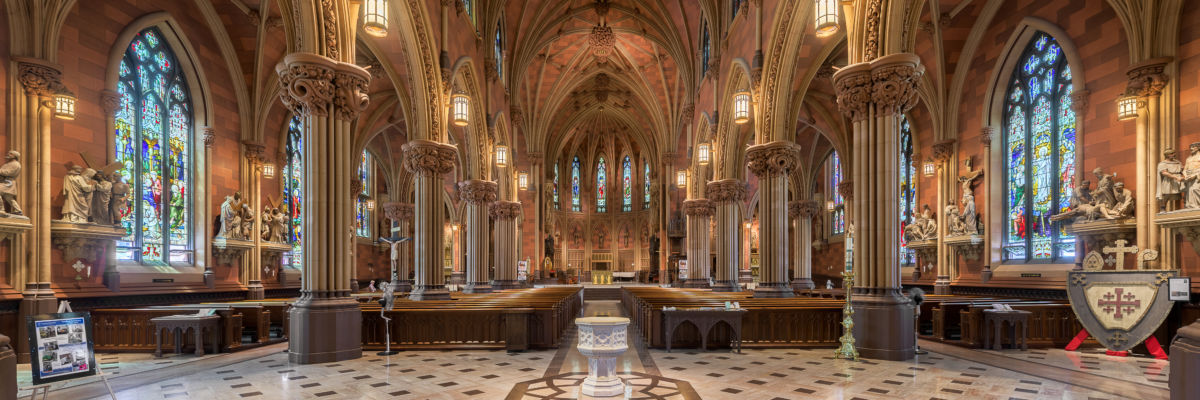
At that time, Jesus came to Jericho and intended to pass through the town.
Now a man there named Zacchaeus,
who was a chief tax collector and also a wealthy man,
was seeking to see who Jesus was;
but he could not see him because of the crowd,
for he was short in stature.
So he ran ahead and climbed a sycamore tree in order to see Jesus,
who was about to pass that way.
When he reached the place, Jesus looked up and said,
“Zacchaeus, come down quickly,
for today I must stay at your house.”
And he came down quickly and received him with joy.
When they saw this, they began to grumble, saying,
“He has gone to stay at the house of a sinner.”
But Zacchaeus stood there and said to the Lord,
“Behold, half of my possessions, Lord, I shall give to the poor,
and if I have extorted anything from anyone
I shall repay it four times over.”
And Jesus said to him,
“Today salvation has come to this house
because this man too is a descendant of Abraham.
For the Son of Man has come to seek
and to save what was lost.”Luke 19:1-10
This Sunday we will take a break from the cycle of the Sunday readings for this year to consider a solemnity that is celebrated every year in every church that has been solemnly dedicated by a bishop or ranking prelate. For me and my confreres, it is the feast of the dedication of our abbey church.
We are all acquainted with the various feasts and solemnities of the Savior, from his conception to his heavenly glory, as well as his Name, his Holy Body and Blood, his Sacred Heart, and his Divine Mercy.
Yet there is a category of feasts of the Lord we might miss if we are not following the Church’s calendar in detail. The dedication of a church is a solemnity of the Lord. To be sure, it is also associated with the saint or mystery of faith in the church’s name, but it is in a very special and particular way a feast of the Lord Jesus.
The celebration of the dedication day is remarkable because it celebrates the members of a local church as members of Christ; it celebrates, as St, Augustine says, “the whole Christ,” that is, the Church in its head and in its members.
As Bl. Columba Marmion teaches, “The mysteries of Christ are our mysteries.” We are brought into these mysteries, initiated into them by the holy sacraments that are the principal part of the worship of the church. This worship is corporate, the worship of a united body, whether few or very many are present.
Christ identifies himself with his members: he feeds them with his own body and blood and he counts as done to himself whatever is done to the least of them. The Blessed Sacrament and our neighbor are the two things we most often encounter in a church, and this is how it should be! A church is the gathering of redeemed humanity drawn by the sacraments and promises of the Savior.
The Gospel passage for the dedication of a church since ancient times has been this unique passage from St. Luke’s account of the Lord’s life and work. It might seem strange, since this passage has nothing to do with a temple or place of worship. There might be several other passages that would serve for the Mass on the occasion of a church dedication or its anniversary, but this is the one that has been handed on by tradition, and is even now the one most often selected.
Why is this? Jesus tells us, “The Son of Man has come to seek and to save what was lost.” He seeks out Zacchaeus, a saint of the Church (in the East his feast is April 20, in the West on August 23), by inviting himself to stay at his house as a guest. The dwelling of a notorious sinner becomes the dwelling of the Messiah and Lord of all.
And what is Zacchaeus’s response? Pure gratitude and repentance and amendment of his life. The seasoned believers present had lost the sense of the greatness of God’s gifts and the power of his mercy to sinners, and so they grumbled. But Jesus and Zacchaeus welcome each other, and they become one by God’s mercy.
When I enter the church each Sunday or on any day, I am entering a house that is both God’s and mine. I am at home and so is he. You see, the church is built up of “living stones,” repentant and redeemed sinners, sharers in the grace of Christ their Head, at whatever stage of the life of Christian perfection they may have reached.
In my prayer, as I enter God’s house and mine, I must welcome all my neighbors for whom I am praying, whom I am asking “to pray for me to the Lord Our God.” I must do this so that I, a sinner by my own admission, may be cleansed of my faults, my own most grievous faults, and be made ready to join in the worship accomplished by Christ in his holy body and blood offered for me and for all.
Do you know the date of the dedication feast of your own parish or the cathedral of your own diocese? Here’s an assignment: find out and begin to celebrate it, for your church is where Christ has sought out and found you along with all the others.
And what is more, there is a plenary indulgence for visiting a church on the feast of its dedication. We can make a little pilgrimage, not only to some great church or shrine far away, but to the churches around us. (A hint on how to keep track of these dedication anniversaries: the Paulist Fathers publish a little manual called an “ordo” which gives the whole Church calendar for a year. There is one for your diocese or region. Most church goods suppliers and Catholic book shops have them.)
The awareness of the holiness and power of our dedicated churches is just one more thing that makes the practice of our Catholic faith so beautiful.



